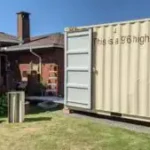Estimated reading time: 7 minutes
Table of contents
- What Are Light Fixtures
- What to Do With Old Light Fixtures
- What’s Trending in Light Fixtures
- What to Clean Light Fixtures With
- How to Clean Light Fixtures
- Why Do Light Fixtures Need to Be Grounded
- Light Fixture Problems
- When Should You Consider Replacing Light Fixtures
- When Changing Light Fixtures
- How to Change Light Fixtures
- How to Install Light Fixtures
- Read More
What Are Light Fixtures
Light fixtures, also known as luminaires, are versatile components in interior and exterior illumination systems. They not only hold and protect light bulbs but also allow for the creative direction of light in specific ways. Available in various styles, from simple, functional designs to ornate, decorative pieces, they offer a canvas for homeowners and DIY enthusiasts to express their creativity. Found in homes, offices, and public spaces, they serve a practical purpose and contribute to the aesthetic appeal of the environment, inspiring unique lighting solutions.
In addition to their aesthetic and functional roles, light fixtures are available in various types, including ceiling, wall, pendant, chandeliers, and outdoor lighting. Each type serves a unique purpose depending on the space’s lighting needs and design preferences. Understanding what light fixtures are and how they function is vital to making informed decisions about lighting choices for any environment.
What to Do With Old Light Fixtures
When upgrading your lighting, it’s essential to consider what to do with old light fixtures. Rather than discarding them, consider donating or selling them if they are still in good condition. Many second-hand stores, recycling centres, and online marketplaces welcome donations or sales of used fixtures, allowing them to find new life in another setting.
If your old light fixtures are not in usable condition, recycling is an environmentally friendly option. Many parts of a light fixture, such as metal, glass, and certain plastics, can be recycled. Check with your local waste management services to determine the best way to responsibly dispose of or recycle your old fixtures. This ensures that you’re updating your lighting and caring for the environment.
What’s Trending in Light Fixtures
The lighting industry has recently seen several exciting trends enhancing functionality and design. Currently, intelligent or smart light fixtures are on the rise, allowing users to control lighting settings remotely via smartphones or voice commands. These fixtures often come with energy-efficient LED bulbs, which are cost-effective and have a smaller environmental footprint.
Moreover, minimalist designs and natural materials are trending in light fixtures. Many homeowners opt for fixtures made from sustainable materials such as bamboo or recycled metals, reflecting a growing desire for eco-friendly living spaces. Additionally, industrial-style lighting with sleek, metallic finishes remains popular, providing a contemporary look that complements modern interiors.
What to Clean Light Fixtures With
Effective cleaning of light fixtures requires suitable materials to ensure they are not damaged. Generally, a warm water and mild dish soap mixture is sufficient for most fixtures. A soft cloth or sponge can gently wipe down the surfaces to remove dust and grime without scratching.
In addition, for fixtures with intricate designs or delicate materials, a microfiber cloth or soft-bristled brush can be handy for reaching small crevices. It’s important to avoid harsh chemicals or abrasive cleaning tools, as these can damage the fixtures’ surfaces and finishes. Knowing what to clean light fixtures with can help maintain their appearance and functionality over time.
How to Clean Light Fixtures
To properly clean light fixtures, turn off the power to the fixture at the circuit breaker to ensure safety. Remove any bulbs and detachable parts, such as shades or covers, which should be cleaned separately. Use a soft cloth or sponge dampened with a mild soap solution to wipe down the fixture’s surfaces, taking care to reach all areas.
After cleaning, rinse off any soap residue with a clean, damp cloth and dry the fixture thoroughly with a lint-free towel. Clean the bulbs with a dry, soft cloth before reinstalling them. Regular cleaning not only keeps your light fixtures looking their best but also ensures they function efficiently. Understanding how to clean light fixtures is crucial for maintaining their longevity.
Why Do Light Fixtures Need to Be Grounded
Grounding light fixtures is a critical safety measure that prevents electrical accidents. When a fixture is grounded, any excess electrical charge is safely directed into the earth, reducing the risk of electrical shock or fire. This is particularly important in areas where fixtures, such as bathrooms or kitchens, may be exposed to moisture.
Moreover, grounding is a requirement set forth by electrical codes and standards in Canada. Ensuring that your light fixtures are appropriately grounded provides peace of mind and compliance with safety regulations. Understanding why light fixtures need to be grounded is vital for safety and legal reasons.
Light Fixture Problems
Like any electrical component, light fixtures can encounter various problems over time. Understanding these issues, such as flickering lights caused by loose wiring, a faulty bulb, or buzzing sounds indicating problems with the fixture’s ballast or dimmer switch, can empower you to take proactive measures. Additionally, being aware of potential issues like poor connections or corrosion can help you address these problems before they become more serious, ensuring the longevity of your light fixtures.
Additionally, light fixtures can suffer from poor connections or corrosion, often resulting from age or exposure to moisture. Regular maintenance and professional inspection can help address these light fixture problems before they become more serious. Being aware of potential issues can help homeowners take timely action to fix them.
When Should You Consider Replacing Light Fixtures
Several factors should be considered when deciding whether to replace light fixtures. If a fixture is outdated and no longer complements the style of your home, it might be time for an upgrade. Additionally, if you’re planning a renovation, replacing fixtures can be a great way to refresh the look of a space.
Functional issues also warrant replacement. If a fixture frequently malfunctions or poses electrical safety risks, replacing it rather than attempting repairs is advisable. When you should consider replacing light fixtures, it can help maintain your home’s aesthetic and functional quality.
When Changing Light Fixtures
When changing light fixtures, safety should be your top priority. Ensure that the new fixture is compatible with the existing electrical setup, including the voltage and type of bulb it requires. Always turn off the power at the circuit breaker before attempting any changes. This emphasis on safety will make you feel secure and well-informed, ensuring a smooth and risk-free installation process.
Consider the design and size of the new fixture to ensure it suits the space’s dimensions and décor. This is an opportune time to explore what’s trending in light fixtures and find styles that enhance your space. Proper planning and execution when changing light fixtures can significantly improve your home’s lighting.
How to Change Light Fixtures
To change light fixtures safely, start by turning off the power to the existing fixture at the circuit breaker. Carefully remove the old fixture by unscrewing it and disconnecting the wires. Note the wire connections, as this will guide you when installing the new fixture.
Next, attach the new fixture’s mounting bracket to the electrical box. Connect the wires from the new fixture to the existing cables, matching colours: black to black, white to white, and ground wire to ground wire. Secure the fixture, then install the bulbs and any decorative elements. Finally, turn the power back on and test the fixture to ensure proper function. Knowing how to change light fixtures can enhance your home’s lighting safely and efficiently.
How to Install Light Fixtures
Installing new light fixtures involves several careful steps to ensure safety and functionality. Begin by turning off the electrical supply to the area where the fixture will be installed. Assemble the fixture according to the manufacturer’s instructions, ensuring all components are secure and in place.
Next, mount the fixture’s bracket to the electrical box and connect the wires per the standard wire colour matching. Ensure all connections are tight and secure to prevent any electrical faults. Once the fixture is mounted and secured, install the bulbs and any additional decorative elements. Restore power and test the fixture to ensure it operates correctly. Understanding how to correctly install light fixtures is crucial for safety and satisfaction in home improvements.




